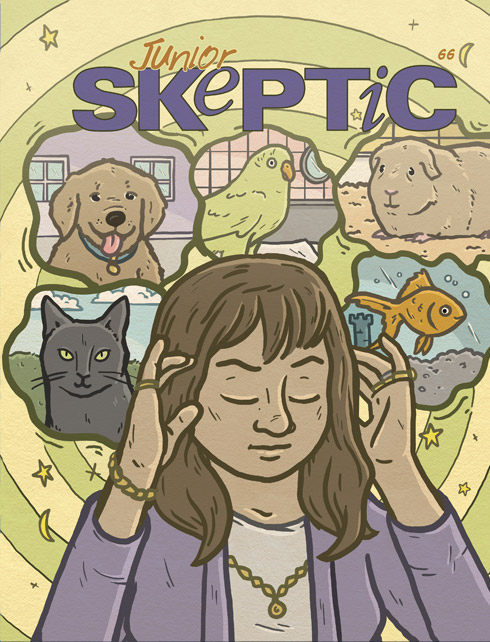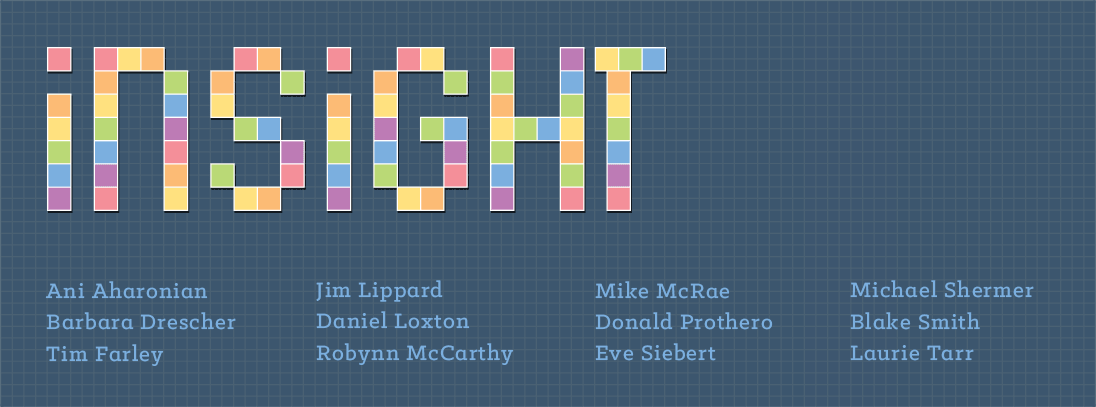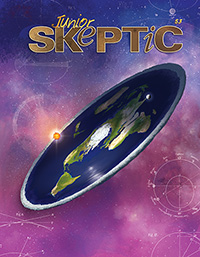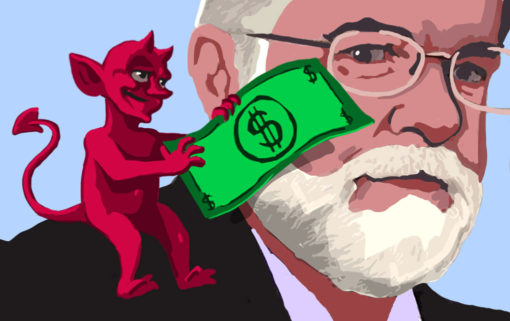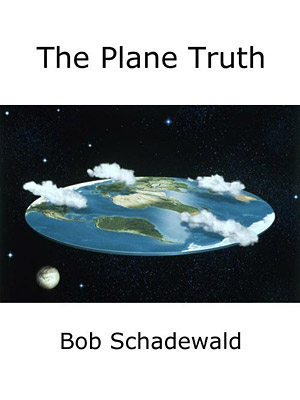This post is something of a personal reflection. If you’re looking for some straight up debunking, my
latest is here.
Recently I attended a dinner party as the guest of a new friend among people who’ve known each other for decades. After dinner, the conversation turned to a story that had puzzled and intrigued the hosts. They were excited to share a YouTube video about a black leopard whose behavior was allegedly improved through the intervention of an “animal communicator” (pet psychic).
Now, this is a literate, philosophical bunch. They like debating, speculating, and devil’s advocacy, so they didn’t much mind that my friend found the claims of the video preposterous. After some lively verbal fencing, she turned to me in exasperation and said, “We have a professional skeptic right here! Daniel, you write about this stuff for a living. What do you think?”
Well, I had thoughts. But I said the minimum: that I hadn’t yet looked professionally at the specific topic of pet psychics, and that the video was a constructed narrative whose claims we should neither accept nor reject without checking. (Then I went away and actually did spend weeks researching and writing a lengthy critique of pet psychics for the pages of Junior Skeptic.)
What I said was true. But it’s also true that I might have contributed more to that conversation in other periods of my life.
CONTINUE READING THIS POST…
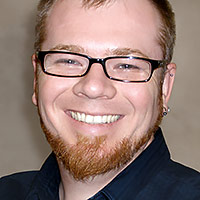
Daniel Loxton is the Editor of INSIGHT at Skeptic.com and of Junior Skeptic, the 10-page kids’ science section bound within Skeptic magazine. Daniel has been an avid follower of the paranormal literature since childhood, and of the skeptical literature since his youth. He is also an award-winning author. Read Daniel’s full bio or his other posts on this blog.
SKEPTIC INVESTIGATES
Recent news stories,1 celebrity endorsements, and Google search trends2 have highlighted an apparently growing conspiracy theory belief that the Earth is not a globe, but instead a flat disc. According to believers, government forces promote a completely fictitious model of the cosmos in order to conceal the true nature of the Earth. Are these claims true?
No. The Earth is Round
The evidence for a spherical Earth is overwhelming.3 Most obviously, there are many thousands of images and videos of the Earth from space, including a continually changing live stream view of the globe from the International Space Station—not to mention all the astronauts who have personally seen the Earth from orbit. Flat Earthers claim that all images of the globe are fraudulent inventions, and all testimony from astronauts is false. It is unreasonable to dismiss all of the evidence from the entire history of space exploration, especially when there is zero evidence for a decades-long “globularist” conspiracy. However, we do not need to rely on evidence from modern space agencies to confirm the roundness of the Earth for ourselves.
The globe has been clearly understood for thousands of years. Indeed, this was one of the first cosmic facts to be worked out correctly by ancient people because evidence of a spherical Earth is visible to the naked eye.
By the time of the philosopher Socrates and his student Plato, many Greeks understood that the Earth could only be a sphere. Sailors would have noticed that the sails of approaching ships appeared before the hulls of the ships became visible because the surface of the sea is slightly curved, like the surface of an enormous ball.4 When you sail toward a ship, island, or lighthouse, their tallest points are the first thing to peek up over the curve of the horizon.
Plato’s student Aristotle offered further “evidence of the senses” to support his own conclusion that the Earth “must necessarily be spherical.” First, there was the evidence of lunar eclipses. When the Moon passes through the shadow of the Earth, that shadow is always the circular shadow of a sphere. Also, Aristotle argued, “our observations of the stars” make it clear “not only that the earth is circular, but also that it is a circle of no great size.” He pointed out that “quite a small change of position to south or north” significantly changes “the stars which are overhead, and the stars seen are different, as one moves northward or southward.” Just as ships can be hidden from view by the curvature of the horizon, so too can the stars.5
The debate about the shape of the Earth has been settled for over two thousand years. An ancient scholar named Eratosthenes—the head of the famous library of Alexandria in Egypt—even correctly approximated the circumference of the Earth using experimental measurements of shadows in two cities and some geometry.6
Despite modern legends about Medieval backwardness, there never was a time when educated people went back to thinking the Earth was flat. Once discovered, the true shape of the globe was too simple and useful a fact to be forgotten. Sailors were reminded of the planet’s roundness every time they climbed a mast to see further over the horizon or looked to the stars to determine their position. By the time of Columbus, his crew and even his critics understood that our world is a globe.7 It had been an established fact for centuries. For example, here’s a passage from the popular astronomy textbook On the Sphere of the World, published over 250 years before Columbus sailed: CONTINUE READING THIS POST…

Daniel Loxton is the Editor of INSIGHT at Skeptic.com and of Junior Skeptic, the 10-page kids’ science section bound within Skeptic magazine. Daniel has been an avid follower of the paranormal literature since childhood, and of the skeptical literature since his youth. He is also an award-winning author. Read Daniel’s full bio or his other posts on this blog.

Drunken Owl Wine Bottle Holder (Photo © 2014 Joseph Oliphint Photography. Image used by permission of Rodney Brazil at HomeWetBar.com)
A small percentage of the population self-identifies as “Skeptic.” This is somewhat different than being skeptical. Anyone can be skeptical, but what I usually call “capital-S” Skeptics are people who are so interested in the methodology and practice of scientific-skepticism that they label themselves to signal to others with a single word that they value these processes enough to say that what they most believe in (or strive to practice) is filtering information through the sieve of science.1
Within this group of Skeptics, there is a sub-set who enjoy researching fringe, paranormal and Fortean topics, which Sharon Hill and Jeb Card refer to as “spooky” topics. It’s a small group of people who value science and critical thinking and try to apply those tools to stories of mysterious monsters, strange phenomena, and magical events — all the while maintaining an enthusiasm for researching and thinking about (dare I say enjoying?) these stories.
I’m in that latter group. I frequently describe it as being in a ghetto within a ghetto. I don’t know if there is a useful and handy shorthand for this group of folks — perhaps Spooky Skeptics? Regardless, from this peculiar vantage we often find ourselves having to defend against stereotypes of skeptics as “armchair naysayers,” “scofftics,” “denialists,” “cynics,” “pseudoskeptics” and “the closed-minded.” This is from the printable pool of undesirable labels; there are many less savory ones. Because of my membership in this peculiar subculture, I find myself urged to defend science in communities whose familiarity with the long, deep history of science criticism is shallow, but whose passionate distrust of Skeptics is deep. CONTINUE READING THIS POST…
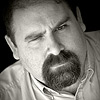
Blake Smith is the producer and host of MonsterTalk, an official podcast of Skeptic magazine. He’s had a lifelong interest in science and the paranormal and enjoys researching the strange and unusual. By day he’s a computer consultant and by night he hunts monsters. He is married and has children. Puns are intentional; don’t bother alerting the management. Read Blake’s other posts on this blog.
GUEST POST
Every job has its moral dilemmas. There’s the bus driver who must drop passengers in questionable neighborhoods. The theater cashier who isn’t allowed to say, “You really want to see that stinker?” The fast food server who must suppress an urge to chastise a customer who has no better taste than to order a hotdog with ketchup.
At the more serious end of the continuum are people like the former Born Again Christian minister I met a few TAMs ago. Former, because, upon his embracing skepticism, conscience compelled him to give up his ministerial career. With it he gave up his livelihood, prestige, an adoring congregation, and a good many friends. As for the years and money he’d invested in chasing down an advanced theological degree? “Oh well,” he said.
So I can hardly complain. As a self-employed advertising and marketing practitioner, I have the luxury of deciding what work I will and will not accept. And because I work with multiple clients, declining or resigning one here or there hurts but won’t put me out of business.
CONTINUE READING THIS POST…
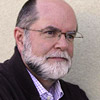
Steve Cuno is chagrined to realize he is old enough to have been in the advertising business for 38 years. He started the RESPONSE Agency 22 years ago. He is the author of numerous articles and two books on marketing, but his favorite role has been that of as-told-to author for Joanne Hanks in her memoir, "It’s Not About the Sex” My Ass: Confessions of an Ex-Mormon Ex-Polygamist Ex-Wife. You may have noticed that Steve likes putting the word “confessions” in titles.
GUEST POST

A typical advertisement for a fraudulent mail order cancer “cure,” highlighted in the American Medical Association’s Nostrums and Quackery (1912).
This summer, I spent a week in Chicago examining the files of the American Medical Association’s Bureau of Investigation. The contents illustrate the full range of weird health-related beliefs found in the 20th century, and it is interesting to watch how these beliefs track with historical events in the development of medicine and to see the role the AMA played in defining what was medicine and what was not. Having sampled the contents of this archive, I can say that there are entire careers in skepticism and the history of pseudoscience to be made excavating those files.
In the 19th century, popularly available health remedies were regulated, as far as I can tell, principally by the consciences of the people who made and sold them. Remedies were sold by pharmacists to anyone who asked for them, and there was really no limit to what could be said to sell these nostrums, either on the label or in advertising. There was no requirement to disclose the contents of a treatment. So let’s say you had a “catarrh” treatment. Catarrh is a word that encompasses all sorts of sinus blockages. If you were to take a treatment for a stuffy head, you could almost expect the remedies to have an alcohol base and a variety of other medically active substances mixed in with it. A health remedy might be up to 25% or more alcohol, and it would not have to be disclosed on the bottle. That alcohol might be mixed with morphine, chloroform, opium, cocaine, and/or caffeine, in undisclosed concentrations and without quality control. Sure, you might forget about your stuffy nose, but you might well become a coke addict, an opium eater, or an alcoholic.
CONTINUE READING THIS POST…
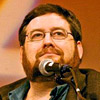
Robert Blaskiewicz is Assistant Professor of Critical Thinking and First Year Studies at Stockton University, where he specializes in and teaches about World War II veterans’ writings, science and pseudoscience, paranormal claims, and conspiracy theories.
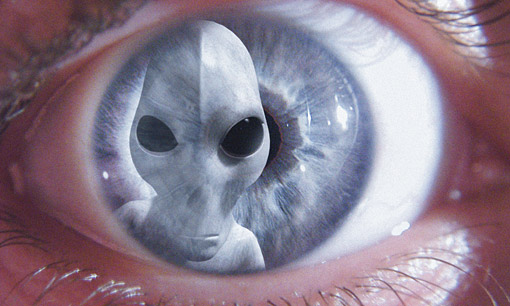
Image by Daniel Loxton with Jim W.W. Smith and Jason Loxton
In my
last post I explained that the teeming menagerie of seemingly dissimilar fringe claims studied by skeptics are unified by the neglect of other scholars, by structural similarities, and (in some cases) by direct interconnection. For this reason, a range of topics can be usefully gathered under the skeptics’ umbrella, and useful insights drawn between them.
Today I’ll ask a related question: why are skeptics a mixed group of magicians, psychologists, doctors, historians, science popularizers, artists, and so on?
CONTINUE READING THIS POST…

Daniel Loxton is the Editor of INSIGHT at Skeptic.com and of Junior Skeptic, the 10-page kids’ science section bound within Skeptic magazine. Daniel has been an avid follower of the paranormal literature since childhood, and of the skeptical literature since his youth. He is also an award-winning author. Read Daniel’s full bio or his other posts on this blog.
A recent Scientific American blog post raised a very tedious and very old complaint about scientific skepticism—in essence, “Paranormal and pseudoscientific claims are trivial. Why don’t you do something I consider important?” The answer I expressed in my previous post is that fringe beliefs are a significant part of the fabric of human existence, and yes, sometimes important in their own right. Seeking to understand those beliefs is a worthwhile research endeavor.
This brought to mind a more interesting question: why does modern skepticism seek to study such a broad and seemingly heterogeneous group of topics—everything from UFOs to climate denialism to mermaids to quack cancer cures?
Philosopher Austin Dacey posed this latter question in a 2011 article after attending a skeptics conference in Las Vegas (The Amazing Meeting). Adopting “the eye of an anthropologist,” Dacey observed that “the remarkable thing was just how non-obvious, even peculiar is the selection of subjects that characterize contemporary organized skepticism.”1 Skeptics collect dozens, indeed hundreds of fringe topics under our research umbrella while choosing not to focus on other topics we consider unrelated—embracing “a kind of canon,” Dacey noted, that “can appear quite odd and contingent. What is it…that binds together ginkgo biloba and El Chupacabra, cold reading and cosmic fine tuning? Why this canon?”
CONTINUE READING THIS POST…

Daniel Loxton is the Editor of INSIGHT at Skeptic.com and of Junior Skeptic, the 10-page kids’ science section bound within Skeptic magazine. Daniel has been an avid follower of the paranormal literature since childhood, and of the skeptical literature since his youth. He is also an award-winning author. Read Daniel’s full bio or his other posts on this blog.
For the entire history of scientific skepticism, folks in our weird and wonderful little field have heard two criticisms offered with metronomic regularity from people who are “skeptical of the skeptics.”1 One is the obvious: “Skeptics are closed-minded!” The other, no less predictable or routine, is my topic today: “Why do you bother with this trivial stuff about pseudoscience and the paranormal? Aren’t there more important things to worry about?”
Yesterday, science writer John Horgan offered the latest example of this second standard criticism in a Scientific American blog post titled “Dear ‘Skeptics,’ Bash Homeopathy and Bigfoot Less, Mammograms and War More” (presented first as a speech last weekend at the Northeast Conference on Science and Skepticism, NECSS, in New York City). Positioning his piece as a critique (“I have to bash skepticism”) from an outsider perspective ( “I don’t belong to skeptical societies. I don’t hang out with people who self-identify as capital-S Skeptics”), Horgan “decided to treat the skeptics skeptically.” He offered a prescription: skeptics should stop patting “each other on the back” and stop wasting our time on the “soft targets” of paranormal and pseudoscientific claims:
I’m asking you skeptics to spend less time bashing soft targets like homeopathy and Bigfoot and more time bashing hard targets like multiverses, cancer tests, psychiatric drugs and war, the hardest target of all.
CONTINUE READING THIS POST…

Daniel Loxton is the Editor of INSIGHT at Skeptic.com and of Junior Skeptic, the 10-page kids’ science section bound within Skeptic magazine. Daniel has been an avid follower of the paranormal literature since childhood, and of the skeptical literature since his youth. He is also an award-winning author. Read Daniel’s full bio or his other posts on this blog.

Richard III’s tomb at Leicester Cathedral. Photo by Isananni
One year ago, Richard III, one of England’s most notorious kings, was reburied at Leicester Cathedral after a series of celebrations and ceremonies suitable for a national hero. Actor Benedict Cumberbatch even read a poem written by Poet Laureate Carol Ann Duffy. Fortunately for him, the poem did not include the word “penguin” (also here). To commemorate the anniversary, the University of Leicester has released a 3D model of Richard’s skeleton in its original, too-short, poorly-dug grave.

Richard III, child-killer and national treasure
Amid all the hoopla, it’s easy to forget that Richard III was not the People’s Princess, but rather a man who almost certainly ordered the murder of two children, both of whom were his nephews and one of whom was probably the rightful king of England. I’ve been interested in the way Richard’s image has been rather successfully rehabilitated through the publicity surrounding the discovery of his remains and their reburial. For the moment, though, I’m going to focus on one element of the story: the way the search for and discovery of the body has itself become mythologized, possibly with the help of a faulty memory.
CONTINUE READING THIS POST…
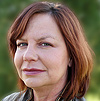
Eve Siebert contributes to the Skepticality podcast and is a panelist on the Virtual Skeptics webcast. She taught college writing and literature for many years. She has a Ph.D. in English literature from Saint Louis University. Her primary area of study is Old and Middle English literature, with secondary concentrations in Old Norse and Shakespeare. Read Eve’s full bio or her other posts on this blog.

Entrance to Vikings Exhibit, Field Museum.
Last year, I had the opportunity to visit a Vikings exhibition at the Field Museum of Natural History in Chicago. I had been invited to Chicago to give a Skeptics in the Pub talk about the erroneous and distinctly odd belief that Leif Erickson discovered Bigfoot in Vinland. I gave the talk on Saturday and went to the exhibit on Sunday. It was a whole Viking-themed weekend—the best kind of weekend. Bigfoot was noticeably absent from the exhibit (and, indeed, the Field Museum in general).
In the last year, I have moved from Wisconsin to New Jersey, and the Viking exhibit has moved from Chicago to New York. I’m tempted to visit it again. I enjoyed it the first time, although it made me a little sad because it reminded me that I was not able to visit the British Museum’s 2014 exhibit, Vikings: Life and Legends. The two exhibits take very different approaches to the Vikings. The British Museum emphasized warfare, stating in one of its press releases:
New interpretations place warfare and warrior identity at the centre of what it meant to be a Viking; cultural contact was often violent, and the transportation of looted goods and slaves reflects the role of Vikings as both raiders and traders.
CONTINUE READING THIS POST…

Eve Siebert contributes to the Skepticality podcast and is a panelist on the Virtual Skeptics webcast. She taught college writing and literature for many years. She has a Ph.D. in English literature from Saint Louis University. Her primary area of study is Old and Middle English literature, with secondary concentrations in Old Norse and Shakespeare. Read Eve’s full bio or her other posts on this blog.
In the online world of allegedly paranormal photos, you will find one referred to as the Boot Hill Ghost. In this modern photo (taken in 1996) a man in the foreground stands in Tombstone Arizona’s famous Boot Hill Cemetery adorned in classic cowboy gear, wearing a cowboy hat, holding a 6-shooter. But it isn’t his steely eyes or checkered kerchief that make the black & white photo so popular on the Internet. Like many alleged ghost photos, the mysterious element was allegedly not seen when the photo was taken. In this case, the strangeness is the clear and obvious form of a man’s torso rising from the soil behind and to the right of the cowboy. The photographer was Ike Clanton (yes, a descendant of the OK Corral Clantons) and the proprietor of a “haunted saloon” in modern Tombstone.
Here is the photo (shared here for the purpose of critical review):
CONTINUE READING THIS POST…

Blake Smith is the producer and host of MonsterTalk, an official podcast of Skeptic magazine. He’s had a lifelong interest in science and the paranormal and enjoys researching the strange and unusual. By day he’s a computer consultant and by night he hunts monsters. He is married and has children. Puns are intentional; don’t bother alerting the management. Read Blake’s other posts on this blog.

Giving Skippy human like expressions and agency was more fantasy than fact.
If you’re over the age of thirty and grew up in Australia, there’s a good chance you know who Skippy is. This famous kangaroo—a friend ever true—was the Aussie equivalent of Lassie, forever helping her human companion, Sonny Hammond, get in and out of trouble.
With their upright stance and small hands, kangaroos are readily anthropomorphised. That is to say, it’s easy to attribute kangaroos with human-like traits. Just recently, a heart-breaking story of a kangaroo mourning a lost companion did the rounds through Australian social media. Photographer Evan Switzer chanced upon a dying female kangaroo being cradled in the forearms of a male, a small joey standing nearby.
“He would lift her up and she wouldn’t stand she’d just fall to the ground, he’d nudge her, stand besides her…it was a pretty special thing, he was just mourning the loss of his mate,” Evan was reported saying in the Daily Mail.
Only the kangaroo wasn’t mourning for its departed mate. It was…well, for a lack of a better term, turned on. Sexually. And might have even been the murderer.
CONTINUE READING THIS POST…
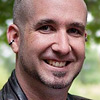
Mike McRae is an Australian science writer and teacher. He has worked for the CSIRO’s education group and developed resources for the Australian government, promoting critical thinking and science education through educational publications. His 2011 book Tribal Science: Brains, Beliefs and Bad Ideas explored humanity’s development to think scientifically—and pseudoscientifically—about the universe. Read Mike’s other posts on this blog.
With the recent Powerball mania I thought it would be a good time to talk about how to tell a sucker bet from a fair bet, and whether playing the lottery is a rational behavior.
Whenever the lottery comes up, people tend to discuss the astronomical odds of winning, holding it up as the best reason to avoid buying a ticket. However, it is not simply the odds of winning that determines if a bet is rational, at least the way psychologists define the term. A rational bet is a fair bet, and what determines if a bet is fair is something called the expected return.
An expected return is the payoff that one expects to receive—the amount, in proportion to the bet, that one expects to gain. A fair bet is one in which the expected return, in the long run, is zero. In other words, one expects to break even. If you expect to do better than break even, you are at an advantage. The odds of winning are part of expected return, but the payout-to-bet ratio is equally important in determining advantage.
CONTINUE READING THIS POST…

Barbara Drescher taught quantitative and cognitive psychology, primarily at California State University, Northridge for a decade. Barbara was a National Science Foundation Fellow and a Phi Kappa Phi Scholar. Her research has been recognized with several awards and the findings discussed in Psychology Today. More recently, Barbara developed educational materials for the James Randi Educational Foundation. Read Barbara’s full bio or her other posts on this blog.
When I started the podcast MonsterTalk, an official podcast of Skeptic Magazine, one of our earliest episodes was going to be about “giants.” I didn’t know what angle I wanted to take on the topic because there are many kinds of legendary giants, but ultimately I decided to look into the famous hoax known as The Cardiff Giant. And when it came to picking a guest, only one person came to mind: Dr. Kenny Feder.
Like many skeptics I don’t trust my own (or anyone else’s) memory. I don’t recall if I first saw Feder doing his damned best to bring some sensible skepticism to any of the many documentaries he’s been on, or whether I first heard him in 2008 when he was interviewed on Skeptic’s Guide to the Universe #59. I suspect it was on National Geographic’s Is it Real? dealing with Atlantis in 2006. Regardless, I bought his book Frauds, Myths and Mysteries and was blown away by it. As I am fond of saying, there is more solid and useful archaeological skepticism on the cover of that book than in the entire run of History’s Ancient Aliens.
Feder’s popularity on MonsterTalk has not been equaled. His entertaining, clear and logical explanations of mysterious topics related to archaeology are our most popular episodes. But now, thanks to the work of fellow archaeologist Sara Head, you can get large doses of Feder and fascinating deep science-based discussions of many of the fringe topics which frustrate skeptics so much.
CONTINUE READING THIS POST…

Blake Smith is the producer and host of MonsterTalk, an official podcast of Skeptic magazine. He’s had a lifelong interest in science and the paranormal and enjoys researching the strange and unusual. By day he’s a computer consultant and by night he hunts monsters. He is married and has children. Puns are intentional; don’t bother alerting the management. Read Blake’s other posts on this blog.
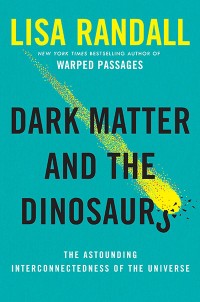
The great tragedy of science—the slaying of a beautiful hypothesis by an ugly fact.
—Thomas Henry Huxley
In recent weeks, physicist Lisa Randall has been promoting her new book, Dark Matter and the Dinosaurs. She even spoke about her latest work for the recent meeting of the Skeptic Society Science Salon on November 22. Naturally, any book which talks about such sexy topics as astronomy and dinosaurs is guaranteed to get lots of fawning press coverage, with little or no scrutiny from the scientific community. Nearly all the coverage and reviews of the book I have seen are either by science journalists without the appropriate background, or by astronomers and physicists. They were a bit skeptical about whether there was any strong evidence for her idea that waves of dark matter contributed to mass extinctions on earth, but could not rule it out. To her credit Randall made clear that she is proposing a hypothesis to be further tested, not a fully complete theory for which she is confident is correct. Like the good scientist that she is, Randall emphasizes that she could be wrong.
This is not a review of the entire book, which is generally well written, and explains the complicated physics of dark matter and other topics is a clear and lively fashion. Unfortunately, the urge to tie her topic to sexy ideas like periodic extinctions and impact model for the end of the dinosaurs got the most press coverage, even if the book itself is more cautious about these topics. Still, it was a mistake to invoke the outdated and debunked ideas like the notion of periodic impacts causing extinctions, which seriously detracts from the credibility of an otherwise solid piece of science writing.
CONTINUE READING THIS POST…
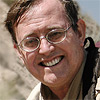
Dr. Donald Prothero taught college geology and paleontology for 35 years, at Caltech, Columbia, and Occidental, Knox, Vassar, Glendale, Mt. San Antonio, and Pierce Colleges. He earned his B.A. in geology and biology (highest honors, Phi Beta Kappa, College Award) from University of California Riverside in 1976, and his M.A. (1978), M.Phil. (1979), and Ph.D. (1982) in geological sciences from Columbia University. He is the author of over 35 books. Read Donald’s full bio or his other posts on this blog.
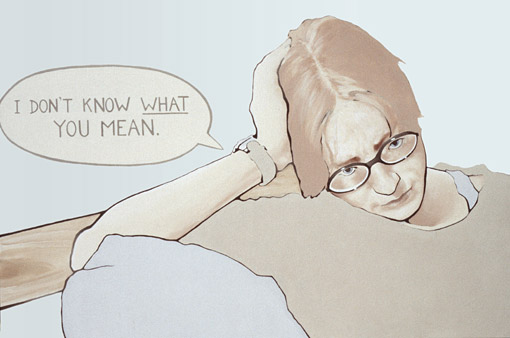
Painting by Daniel Loxton, c.1999. Acrylic on canvas. 24″x36″.
The journal Judgment and Decision Making has stirred considerable interest with a recent paper titled “On the Reception and Detection of Pseudo-Profound Bullshit,” by Pennycook et al (read PDF). The authors conducted four surveys designed to explore differing individual reactions to “seemingly impressive assertions that are presented as true and meaningful but are actually vacuous.” That is, the authors are “interested in the factors that predispose one to become or to resist becoming a bullshittee.”1
Skeptics naturally share this interest.
The studies presented survey participants with vague, conceptually meaningless, buzzword-laden statements and asked them to rate the “relative profundity of each statement on a scale from 1 (not at all profound) to 5 (very profound).” The included statements were generated by two online tools: “The New Age Bullshit Generator” and Wisdomofchopra.com, which “constructs meaningless statements with appropriate syntactic structure by randomly mashing together a list of words used in Deepak Chopra’s tweets (e.g., ‘Imagination is inside exponential space time events’).”2 Some of the studies also included motivational aphorisms, simple factual statements, and actual tweets selected from Chopra’s Twitter feed,3 such as this one:
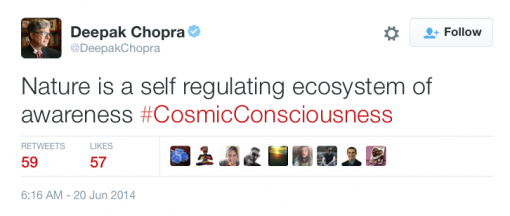
CONTINUE READING THIS POST…

Daniel Loxton is the Editor of INSIGHT at Skeptic.com and of Junior Skeptic, the 10-page kids’ science section bound within Skeptic magazine. Daniel has been an avid follower of the paranormal literature since childhood, and of the skeptical literature since his youth. He is also an award-winning author. Read Daniel’s full bio or his other posts on this blog.
Outside of Junior Skeptic (my primary ongoing project) a surprising amount of my professional output—most of my blogging, stage appearances, op-eds (PDF), and interviews—is given over to the oddly controversial argument that my field should exist.
It’s my opinion that “scientific” skepticism should be acknowledged as a distinct field of study with a unique mandate: the critical, science-informed, scholarly examination of paranormal, pseudoscientific, and other fringe claims. Consequently, I’ve rejected (PDF) periodic suggestions that skepticism should shift its focus from fringe topics toward arguably “more important” matters, or that skepticism ought to be subsumed as a side-project within some other sphere (such as “science,” humanism, or atheism).
Colleagues such as Steve Novella, Sharon Hill, Barbara Drescher, and Jamy Ian Swiss (video) often find themselves drawn to such discussions. I tend to agree with these and other traditionalist skeptics about the most suitable scope for scientific skepticism: “testable” (that is, investigable) claims. In addition, I’ve argued that it’s desirable for skeptics to emphasize a specialized core subject matter within that “testable claims” scope: pseudoscience and the paranormal. Not an exclusive concern with fringe claims, mind—that’s more restrictive than I or anyone wants to see—just an ongoing (and historically well-established) emphasis upon claims of that type.
CONTINUE READING THIS POST…

Daniel Loxton is the Editor of INSIGHT at Skeptic.com and of Junior Skeptic, the 10-page kids’ science section bound within Skeptic magazine. Daniel has been an avid follower of the paranormal literature since childhood, and of the skeptical literature since his youth. He is also an award-winning author. Read Daniel’s full bio or his other posts on this blog.
I’m very pleased to learn that The Plane Truth, the unfinished final work of skeptical scholarship by the late Robert J. Schadewald (1943–2000), has now been prepared for publication and released online for free. You can read the book in its web version here, where you also find the EPUB ebook version available for download.
During his life, Bob Schadewald was the world’s leading skeptical expert on the history of flat-Earth advocacy. The pseudoscientific notion that the Earth is a flat disk may seem as quaint as it is preposterous, but so-called “Zetetic Astronomy” enjoyed a surprisingly strong period of public prominence in the UK and US during the 19th century—attracting attention from debunkers of the period such as Alfred Russel Wallace1 (see Skeptic Vol. 20, No. 3) and Richard Anthony Proctor, and prompting reflections from later thinkers including George Bernard Shaw and George Orwell. During the 20th century the relative sophistication of Zetetic Astronomy collapsed into muddled conspiracy theories, parody, and ultra-fundamentalist Biblical literalism; nevertheless, flat-Earth advocacy continues to this day.
CONTINUE READING THIS POST…

Daniel Loxton is the Editor of INSIGHT at Skeptic.com and of Junior Skeptic, the 10-page kids’ science section bound within Skeptic magazine. Daniel has been an avid follower of the paranormal literature since childhood, and of the skeptical literature since his youth. He is also an award-winning author. Read Daniel’s full bio or his other posts on this blog.
This is an excerpt from Junior Skeptic 37 (published in 2010 inside Skeptic magazine Vol. 15, No. 4), which is a quick ten-page tour of the “Top Ten Busted Myths.” Junior Skeptic is written for (older) children, and does not include endnotes, though I often call out important sources in sidebars or the text of the story itself. However, I’ve included one or two citations here for your interest:

Have you heard that we only use 10 percent of our brains? Imagine what we could accomplish if we could discover how to use that other 90 percent! Could we discover an untapped potential for incredible psychic powers?
There’s only one problem: none of that is true. Humans use every part of our brains.
CONTINUE READING THIS POST…

Daniel Loxton is the Editor of INSIGHT at Skeptic.com and of Junior Skeptic, the 10-page kids’ science section bound within Skeptic magazine. Daniel has been an avid follower of the paranormal literature since childhood, and of the skeptical literature since his youth. He is also an award-winning author. Read Daniel’s full bio or his other posts on this blog.
GUEST POST
I had a skeptic “win.” That is, I produced content partially inspired by someone’s misconception; this same someone saw my content, and then changed their mind. Essentially, “Hey, you’re wrong, and here’s why.” “Huh. I guess I am wrong. Copy that.”
That never happens! I mean, yeah, it happens, but rarely enough that skeptics (if you’ll forgive the turn of phrase) tend to forget the hits and remember the misses. Cynicism is easy, but rarely correlates with reality.
To give you a full picture, we have to go back to 2006 and look at Michael Shermer’s Scientific American article about Airborne entitled “Airborne Baloney.” In this article he explains how Airborne—”an orange-flavored effervescent concoction of herbs, antioxidants, electrolytes and amino acids that fizzles into action in a glass of water”—offers no objectively measurable effect on people’s health. Basically, it’s bullshit being sold to you in the style of a confidence man: “Hey, I’m just a school teacher. I’m an ordinary person like you. Now give me your money!” This, of course, was bad news: a company was misleading customers. However, some people considered it news that was bad to share.
In 2013 comic and actor Patton Oswalt was a guest on Never Not Funny, a podcast hosted by Jimmy Pardo and Matt Belknap. On the episode, they express great amounts of vitriol—not towards the multimillion dollar company who was, and still is, making money off of the ignorance of consumers, but against the science educator (“one of these fucking ‘skeptic’ assholes”) who was pointing out the truth.
CONTINUE READING THIS POST…

John Rael is the producer and lead kicker of the webseries youtube.com/SkepticallyPwnd. He is also the co-host of The Odds Must Be Crazy on Skepticality. John has two BAs in Philosophy and Theatre Arts from the University of Northern Colorado.
NEXT →
